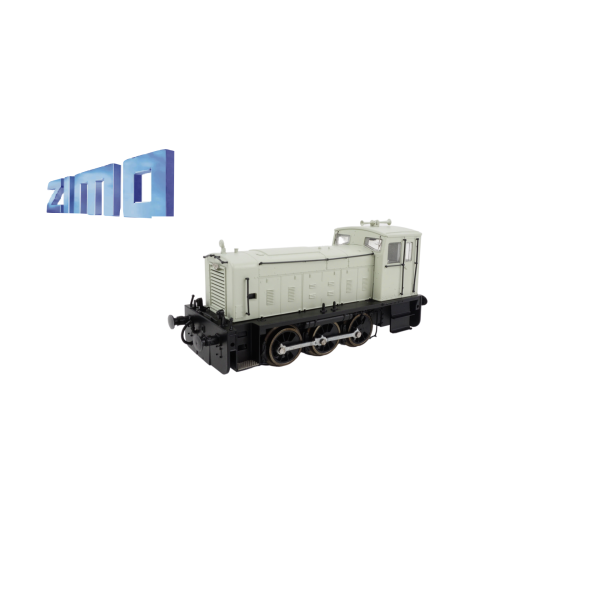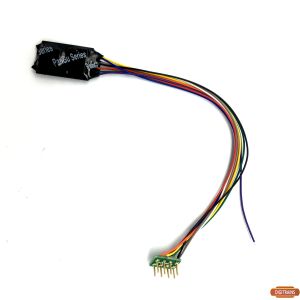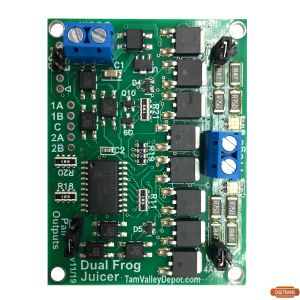ZS165P RUSTON 165 SOUNDFILE FOR ZIMO
Engine Starting
The RH165 is started not with an electric starter motor but by introducing compressed air to the cylinders to crank the engine.
Normal practice would be to leave the air tanks fully charged at the end of duty so that there would be sufficient pressure (220 PSI or above) to start the engine at the next duty turn.
In such cases, starting can be achieved with F1 alone, or F7 and F1 combined to simulate a cold start.
For times when the engine does not start, or there is insufficient pressure to attempt a start, the locos were equipped with either a ‘ship to shore’ air line or, more usually, with a small petrol driven donkey engine to drive the compressor to attain starting pressure, after which the engine could be started.
In this project, the donkey engine sound is operated by F key 15.
So to simulate starting when pressure is low, engage F15 for sufficient time to allow pressure to build up before starting the main engine with either F1 alone (warm start) or F7 and F1 combined (cold start).
In each case, the model cannot be driven until the Idle sound is playing. (On the real loco this would be when there is sufficient air to operate the brakes, so this is a safety feature).
Throttle Response Scheme.
As supplied, the decoder will produce the sounds of a Ruston and Hornsby 165 shunting loco with a train on the hook.
After the start-up routine the loco will stand with the diesel engine ticking over at Idle.
The sounds will respond to the throttle control in the following way:
Select speed step 1. The brakes will release, the PM will increase power to get the loco moving, and will continue until at higher speed, a gear change will be initiated. This will be repeated until the 5th gear (top) is achieved. The precise speed steps will depend upon your model, so I suggest you make a note of the actual figures for your later use.
The sounds will change down at similar points on deceleration.
The model can be driven in this way without ever needing to use any control other than the throttle.
For those of you who prefer something more immersive, there are extra control features to further enhance your driving pleasure.
Coasting
No matter what actual speed your model is travelling at, or which engine note range is playing, reducing the throttle by 10 speed steps (of 128) will spool down the engine sounds to ‘Coasting’
The coasting sound will continue until you accelerate; at which point the sounds will change to those relevant to the current speed.
Alternatively, to force the engine to play idling sounds, or to avoid engine ramp up when pottering about the yard, use F6 at any time
Heavy Train/Light Engine Mode Selection
The default setting is for ‘heavy train’. Inertia is high so acceleration (and deceleration) is restricted.
Activated by F5, Light Engine mode enables reduced inertia setting to allow more rapid acceleration and deceleration.
F5 can be operated at any speed to give another way in which the model’s response to control inputs may be modified instantly.
Dynamic Inertia
A combination of new features is included in the automatic operation of the throttle which will affect how the model responds to your control inputs.
The operation is identical in either ‘heavy’ or ‘light’ mode.
Put in simple terms, the wider you open the power controller, the quicker the gear change sounds occur and for the first time on any decoder, the acceleration rate increases correspondingly.
What does this mean in practice?
If you use your controller’s throttle gently, with modest speed step increases, then the engine will rise and fall automatically and the model will accelerate according to the momentum setting. This is by default high for ‘heavy’ and low for ‘light’.
If however, you open the throttle rapidly, the gears will change up to 5th and initial acceleration will be approximately 3 times quicker. This change in acceleration rate is variable and dependent upon throttle operation.
Brakes
F2 will give the sound of air brake applications. They can be ‘dabbed’ or held for varying length. The sound will respond accordingly.
However, if the throttle is reduced beforehand, as a real driver would do before braking, a braking force will be applied which will continue to increase the longer F2 is held. Short dabs will provide speed trimming, held down continuously will result in a controlled ‘Emergency Stop’.
PowerCab users please note that the Horn/Whistle button operates the same sound/function as the F2 Key, but set as ‘momentary’. This facilities the precise operation of the brakes and should be used instead of F2.
Other systems may have F2 set to operate as ‘momentary’ by default, or can be set to do so.
Enhanced features.
1 ‘Straight Brake’ air release sound plays automatically a few seconds after the loco comes to a halt. This is fully automatic and requires no operator intervention.
2. Wheel Flange. Operated by F9 as usual, but in this project the sound will not play when speed is zero. This means it can be safely used in close quarters shunting without needing to be manually disengaged. (No embarrassing flange squealing from a stationary loco).
Furthermore, there are both slow speed and higher speed flange sounds available. The sound project automatically selects the correct sample depending upon the actual speed of the model.
(the change occurs circa speed step 10 of 28 or 41 of 128)
3. Wagons ‘hunting’. This feature is engaged with F key 8, but is automatically disengaged when ‘Light Engine’ mode is selected. It does not play sounds when the loco is stationary.
This feature can be used to simulate the sound of 3 link couplings ‘snatching’ on harsh acceleration or wagon buffering sounds on deceleration (or rough braking) by varied use of the throttle control.
In the default ‘Heavy Train’ mode, i.e. with F5 not engaged, the action is as follows:
From Standing, open throttle no more than 8 speed steps (of 28) at a time. The model will accelerate normally, with gear changes occurring at the respective speed steps. No snatching sounds will be played.
From Standing, open the throttle by 8 speed steps or more and the buffering sounds will play. This will happen at any time the throttle is increased by this amount.
When moving, reduce speed by no more that 9 steps at a time. The model will decelerate normally, with gear changes determined by the decoder.
When moving, reduce speed by 10 speed steps or more and buffering sounds will play. This will happen at any time the throttle is increased by this amount.
With the model moving at slow speed, operate the Brake Key. If this key is active at the point at which the model stops moving, the buffering sound will play as the wagons close up on stopping.
Live Volume Control
Provided the sound is switched on and the ‘fade’ button is not active, it is possible to change the overall volume to suit changing needs.
Engage F27 and the sound levels will gradually reduce, eventually to silence
Engage F28 and the sound levels will gradually increase, eventually to maximum.
In each case, disengage the F key when the desired level is attained. Set F27 and F28 as ‘momentary’ if your DCC controller allows you to do so.
Note: If the volume controls appear to not function, check that F19, F27 and F28 are disengaged before making a further attempt.
It’s now down to your skill and knowledge to simulate any eventuality!
|
Function List
|
|
|
|
|
F Key
|
Function/Sound
|
|
|
0
|
Marker lights (If fitted)
|
|
1
|
Sound On/Off
|
|
2
|
Brake Key (see text)
|
|
3
|
Playable Horn
|
|
4
|
Toot Toot Horn
|
|
5
|
Heavy Train/Light Engine
|
|
6
|
Engine Idle/Coasting
|
|
7
|
Cold Start
|
|
8
|
Enable Automatic Wagon Buffering (See Text)
|
|
9
|
Enable Automatic Flange Squeal (See Text)
|
|
10
|
Cab Light (FO1)
|
|
11
|
Buffer Up
|
|
12
|
Coupling
|
|
13
|
‘Squeeze Up’
|
|
14
|
‘Move away’
|
|
15
|
Donkey Engine
|
|
16
|
Windscreen Wipers
|
|
17
|
Despatch Whistle
|
|
18 On
|
Door Open
|
|
18 Off
|
Door Slam
|
|
19
|
Fade All Sounds
|
|
20
|
Shunt Mode (half speed, no inertia)
|
|
21
|
‘Draw Up’
|
|
22
|
‘Keep Coming’
|
|
23
|
‘6Ft to Buffer-up’
|
|
24
|
‘Tea Up’
|
|
25
|
-
|
|
26
|
-
|
|
27
|
Volume Down
|
|
28
|
Volume Up
|





